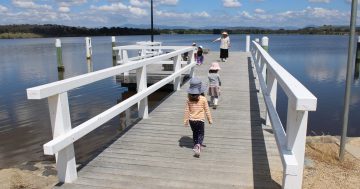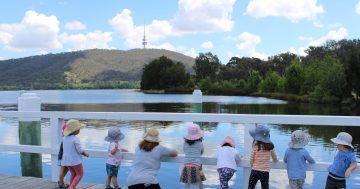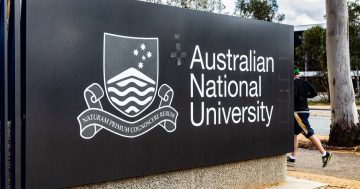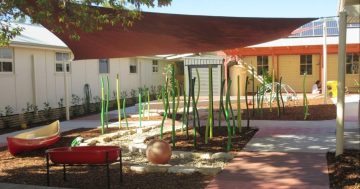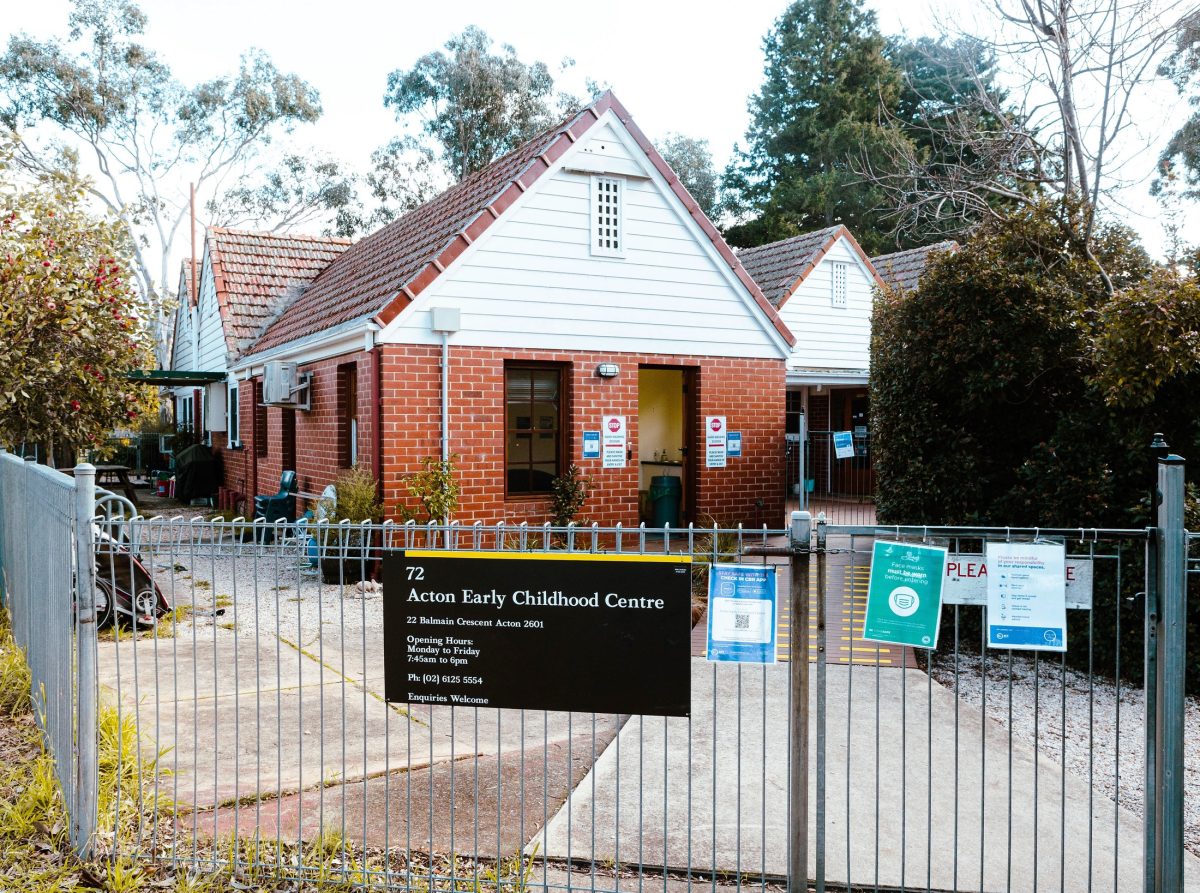
A heritage report has found that ANU’s four community childcare centres would need extensive remediation work to get them up to code. Photo: Acton Early Childhood Centre.
A heritage report recommended the Australian National University move away from using historic buildings as four community childcare centres.
GML Heritage was contracted to provide heritage advice on the remediation work for the four childcare centres – UPCCC, Heritage Childcare Centre, Cubby House on Campus and Acton Early Childhood Centre – which are located across seven historic buildings at the university’s Acton campus.
All four centres were damaged in the 2020 Canberra hailstorm and subsequent investigations found “extensive hazardous material” including asbestos sheeting and lead paint.
“To bring the childcare centres up to contemporary standards, for accessibility, health and safety, extensive remediation and reconstruction works would be needed in all buildings,” the report noted.
“The requirement for extensive remediation of the historic cottages will likely result in an adverse heritage impact. The best approach for mitigating potential significant impacts is through a conservation-focused restoration approach.”
Given the buildings’ Commonwealth Heritage status, the ANU is obliged to “protect, conserve and transmit the heritage values” and cannot take action that would likely impact those values. It would also need approval from the Environment and Water Minister to carry out significant works.
During the evaluation, AMC Architecture was contracted to identify the scope of works needed to remediate the buildings and bring them up to code to both operate as childcare centres and be accessible to disability standards.
It found that “extensive demolition” would be needed for remediation.
“As well as removing hazmat, walls will need to be demolished to widen corridors, and windows removed and reinstated at different heights. Of the seven buildings making up the four childcares, only Building 72 (22 Balmain Lane) will retain a noticeable amount of building fabric, retaining some internal and external walls,” the report noted.
“The removal and demolition of original, historic fabric will leave little heritage integrity. Demolition of historic fabric would have an adverse, significant impact to heritage values because it is an irreversible action.”
It was noted that all the buildings would need their lead-painted external and internal walls, window frames, architraves, and doors removed and replaced, along with the asbestos wall linings.
Cubby House on Campus would need all its exterior cladding and features demolished (except for the chimneys and front entry columns).
“The scope of proposed works to for the Acton Cottages and Lennox House Complex buildings … would involve hazardous material remediation and the removal of the majority of historic fabric, effectively causing complete demolition of at least six of the seven buildings (Buildings 76, 75G (Blocks D, G, H) and 75E&F) and major, partial demolition of Building 72,” the report noted.
“The currently scoped works, therefore, would have an unacceptable, severe heritage impact on the heritage values protected under the EPBC Act and would be unlikely to obtain approval as proposed.
“A different use for the historic buildings that does not require the high level of intervention for hazardous material remediation would be a better solution.”
It’s expected the works needed would not be approved by the Environment and Water Minister. The ANU would also have to seek the National Capital Authority’s approval for the proposed works.

Parents, staff and children with the ANU’s four community childcare providers have taken their case to Canberra’s federal representatives. Photo: Claire Fenwicke.
Due to this, GML Heritage recommended the ANU seek alternative options to address the remediation needs that would have fewer heritage impacts.
It suggested a change in the use of the buildings – that is, not as childcare centres – would be a “non-interventionist solution”.
“The level of remediation required for the buildings is due to their current use as childcare facilities. Due to the risks associated with children, safety measures which have less heritage impact such as partial remediation, encapsulation of hazardous materials or warnings are not suitable,” the report noted.
“While remediation of the buildings would probably still be required, if the buildings were repurposed and adapted for a different function (for example, to offices) methods which have less impact could be used and more heritage fabric could be retained.”
This report was completed before the university decided not to extend the four operators’ licenses, a move that has attracted significant backlash from the community and politicians at the Territory and Federal level.
An ANU spokesperson said the university had “nothing but praise” for the quality of care provided by the current operators.
“This is why we have invited only the current community providers to develop a proposal to operate the new facilities,” they said.
“We will continue to heavily subsidise operating costs to protect the community providers from normal commercial pressures associated with childcare services.”












